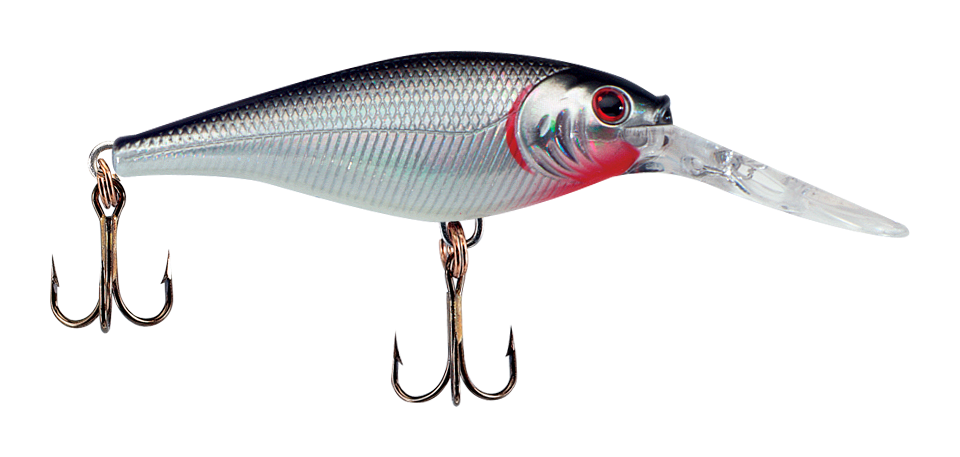Jerkbaits are slender, minnow-shaped lures with erratic darting action, ideal for triggering reaction strikes from predatory fish. Crankbaits have a rounded body and lip, creating a wobbling action mimicking injured baitfish.
Both lures are effective, but their use depends on the target species, water conditions, and angler preference.
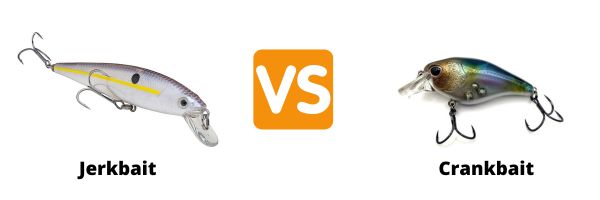
Table of Contents
Jerkbait vs Crankbait Overview
Jerkbaits and crankbaits are similar in that they are both hard body lures with a nose bib and normally treble hooks. The difference comes in the way they attract fish and the way they are used.
Crankbaits produce an attractive movement or shake in their body as they are retrieved. This means they should be retrieved constantly, giving them as much time to make this motion as possible.
Jerkbaits move more like a shrimp in a stop/go motion. This mimics local baitfish and bugs and moves up and down through the water column, allowing you to cover more ground.
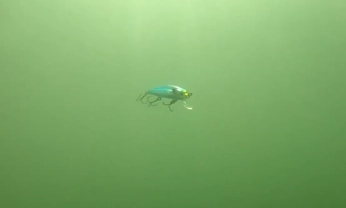
They also spend time motionless, giving lazy fish ample opportunity to bite.
Jerkbaits and crankbaits are two sides of the same coin – they can be used together for many similar fish species. When one starts getting strikes, you can focus on them for the rest of your days fishing.
Key Differences
Jerkbaits and crankbaits are both effective lures for catching bass but differ in design, action, and ideal fishing conditions. Choosing the right one depends on factors such as water temperature, clarity, depth, and the type of structure or cover in the area. Here’s a comparison of the two lures to help you decide which one to use:
| Key Metric | Jerkbait | Crankbait |
| Design | Sleek, elongated body with a lipless or small-lipped design. | Rounded or square body with a diving lip that determines the running depth. |
| Action | Steady wobbling or rolling action mimics swimming baitfish or crawfish. | Steady wobbling or rolling action that mimics swimming baitfish or crawfish. |
| Ideal Conditions | Best suited for clear to moderately stained water and more effective in colder water temperatures (40-60°F) when bass are more lethargic. | They can be effective in various water clarities and temperatures but tend to excel in stained or muddy water and warmer water temperatures (above 60°F). |
| Technique | Effective when worked slowly with pauses, allowing bass to hone in on the lure. | Typically retrieved with a steady, medium-speed crank, but can also be paused, twitched, or “deflected” off underwater structures to trigger bites. |
| Depth | Typically works best in shallow to mid-depth ranges, although some suspending models can be used in deeper water. | They can cover a wide range of depths depending on the lip size and design, from shallow squarebills to deep-diving crankbaits. |
To decide which lure to use, consider the current fishing conditions and the behavior of the bass in your area. Jerkbaits are generally better for colder water and clear conditions, while crankbaits are more versatile and work well in warmer water and stained or muddy conditions. Experiment with both types of lures to determine which produces the best results for your situation.
When to Use Jerkbaits
Jerkbaits can effectively catch bass in various conditions, but they tend to excel in specific situations. Ideal times to use jerkbait lures for bass fishing include colder water temperatures, as jerkbaits work well in cold water conditions, typically ranging from 40-60°F. Bass tend to be more lethargic during colder months, and the erratic action of a jerkbait can trigger reaction strikes as it mimics injured or dying baitfish.
Water Clarity
During the pre-spawn and early spring, bass start to move into shallower waters to feed and prepare for spawning. The slow, twitching retrieve of a jerkbait can entice these more sluggish fish. Jerkbaits are more effective in clear to moderately stained water because their erratic action is more easily visible to bass. In murkier water, bass rely more on their lateral line to detect vibrations, making crankbaits or spinnerbaits a better choice.
Target Areas
Jerkbaits are excellent for targeting suspended bass, as the lures can be paused and held at a specific depth, tempting bass to strike. Adjust your retrieve and pause duration based on the fish’s activity level. Work jerkbaits around docks, weed lines, submerged timber, or other types of cover. The darting action of the jerkbait can entice bass to come out from hiding and strike.
Look for any baitfish in the area. Jerkbaits can be an excellent choice as they mimic the erratic movement of injured or distressed baitfish, making them an attractive meal for opportunistic bass.
Jerkbait Techniques
| Technique | Situation | Effectiveness |
|---|---|---|
| Straight Retrieve | Clear water, high visibility | ⭐⭐⭐⭐ |
| Twitching | Stained or muddy water, aggressive bass | ⭐⭐⭐⭐⭐ |
| Suspending | Cold water, lethargic bass | ⭐⭐⭐⭐ |
| Stop-and-Go Retrieve | Pre-spawn, post-spawn, and around structure | ⭐⭐⭐⭐⭐ |
| Diving and Rising | Around submerged vegetation or drop-offs | ⭐⭐⭐⭐ |
| Finesse Presentation | High-pressure fishing situations, heavily-fished areas | ⭐⭐⭐⭐⭐ |
| Dead Sticking | Extreme cold or high-pressure situations | ⭐⭐⭐ |
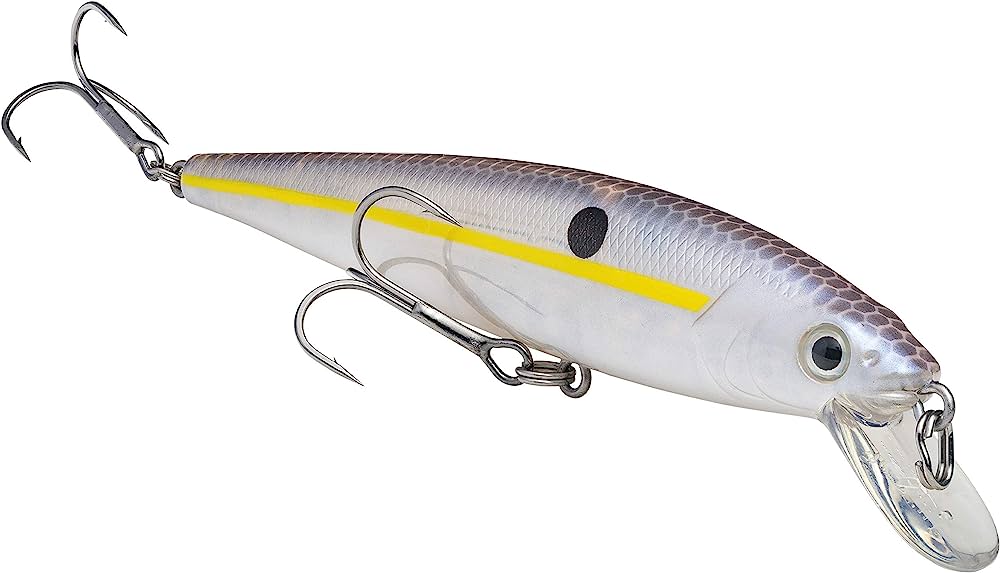
When to Use Crankbaits
Crankbaits are versatile lures that can be effective in various situations for bass fishing. Ideal times to use crankbait lures for bass include warmer water temperatures, as crankbaits tend to perform better in warmer water conditions, typically above 60°F. Bass are more active during warmer months and are likely to chase the wobbling action of crankbaits.
Water Clarity
Crankbaits are ideal in muddy water because their vibration and wobbling action help bass locate the lure through their lateral line, even when visibility is low. Crankbaits come in different styles, such as squarebills, medium-divers, and deep-divers, allowing you to target bass at various depths. Choose the right crankbait based on the depth at which bass are holding.
Target Areas
Crankbaits can effectively target bass around structure, such as rocks, logs, and ledges. The deflection of the crankbait off of structure can trigger reaction strikes from bass. Crankbaits can be particularly effective during seasonal transitions when bass feed actively to prepare for temperature changes and food availability. This includes pre-spawn, post-spawn, and fall periods.
When bass are targeting baitfish or crawfish, crankbaits are designed to mimic these prey items, making them an excellent choice.
Crankbait Techniques
| Technique | Situation | Effectiveness |
|---|---|---|
| Steady Retrieve | Clear water, high visibility | ⭐⭐⭐⭐ |
| Stop-and-Go Retrieve | Stained or muddy water, aggressive bass | ⭐⭐⭐⭐⭐ |
| Bumping Structure | Around rocks, docks, and other structure | ⭐⭐⭐⭐⭐ |
| Deep Diving Crankbait | Deep water ledges, humps, and channels | ⭐⭐⭐⭐ |
| Shallow Diving Crankbait | Shallow water, grass lines, and flats | ⭐⭐⭐⭐⭐ |
| Lipless Crankbait | Around submerged vegetation or sparse cover | ⭐⭐⭐⭐ |
| Squarebill Crankbait | Deflecting off cover, such as wood and rocks | ⭐⭐⭐⭐⭐ |
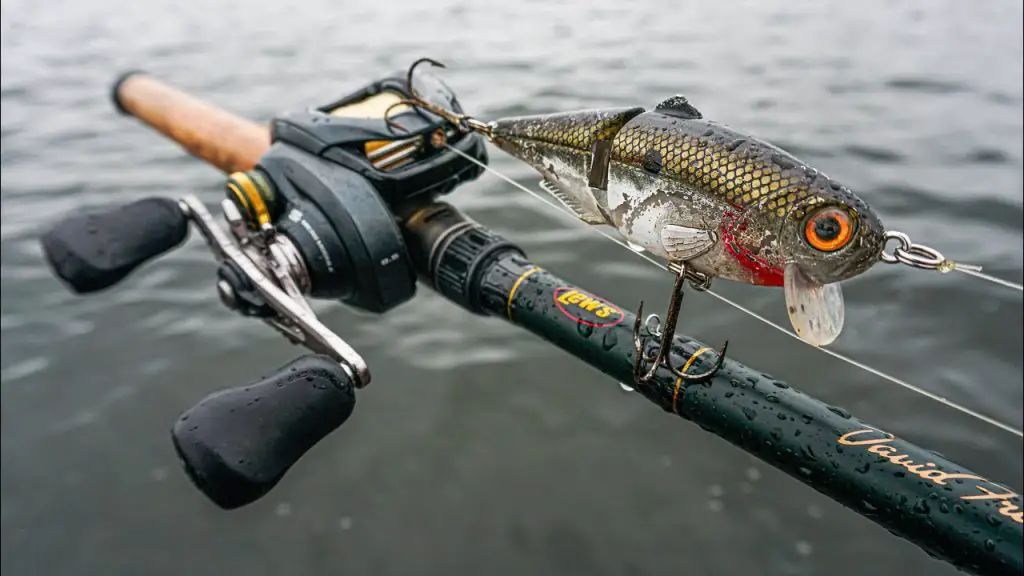
Pro Angler Tricks
My experiences with both jerkbaits and crankbaits have taught me that each lure has its unique strengths and applications for bass fishing. While jerkbaits have proven particularly effective in colder water temperatures and clear to moderately stained conditions, crankbaits offer versatility in various water conditions and depths. As I’ve fished various lakes and rivers over the years, I’ve realised the importance of adapting my lure selection to the specific situation and bass behavior.
There have been days when the erratic action of a jerkbait triggered aggressive strikes from lethargic, cold-water bass, and other times when the steady wobble of a crankbait enticed bass from their hiding spots in stained or muddy waters. By learning the nuances of each lure and experimenting with different retrieval techniques, I’ve been able to maximize my success on the water.
Conclusion
The choice between jerkbaits and crankbaits comes down to understanding the conditions you’re fishing in and the preferences of the bass in your area. My advice to fellow anglers is to carry a variety of both types of lures and be prepared to adapt your approach based on the circumstances. With time and practice, you’ll develop a keen sense of when to reach for a jerkbait vs crankbait, and your bass fishing adventures will be all the more rewarding.


